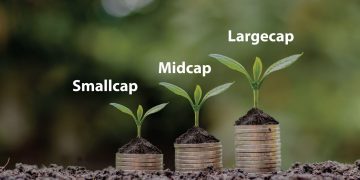While investing, most investors look for the twin goals of good returns and saving tax. In this article, we will learn about the equity-linked savings scheme (ELSS) that has the potential to give good returns with tax savings.
Introduction to ELSS mutual funds
An ELSS mutual fund is an open-ended equity-linked savings scheme with a three-year lock-in period and tax benefit. It invests a minimum of 80% of its total assets in equity and equity-related instruments. An investment in these tax saving mutual funds is eligible for a deduction from taxable income under Section 80C of the Income Tax Act. The maximum deduction allowed in a financial year is the amount invested or ₹1,50,000, whichever is lower.
If you invest a lump sum, it will have a lock-in period of three years. If you invest through SIP mode, then every SIP instalment will have a lock-in period of three years.
Who should invest in ELSS?
As discussed earlier, an ELSS fund invests a minimum of 80% of its total assets in equity and equity-related instruments. As equities have high risk, only investors with an aggressive risk profile should invest in an ELSS tax saver fund. Also, ELSS has a lock-in of three years. So, investors who are okay with the three-year lock-in period should invest in an ELSS tax saving scheme.
Risks involved in ELSS mutual funds
ELSS mutual funds are categorized in the high-risk category. Equity markets are volatile. During times like economic uncertainty, recession, war, political instability, pandemic, etc., the stock markets can crash. ELSS investors will see huge cuts in their ELSS portfolio during such stock market falls. Also, an investor cannot exit an ELSS scheme during such events due to the three-year lock-in.
Return potential of ELSS mutual funds
In the earlier section, we saw how ELSS funds could be risky during economic uncertainty. But, during times of economic boom, ELSS mutual funds can give good returns to their investors. In the long run, ELSS mutual funds have the potential to give inflation-beating high returns. For example, from 2003 to 2008, India experienced one of the best economic growth periods. Most ELSS mutual funds gave very good returns to their investors during that time.
Compounding effect of mutual funds with respect to time
In the long run, ELSS mutual funds benefit from the magic of compounding. The longer the investment time horizon, the better the chances of high returns. ELSS mutual funds can compound your wealth and help you achieve your financial goals.
Advantages of ELSS mutual funds
The biggest advantage of investing in ELSS mutual funds is the tax saving under Section 80C of the Income Tax Act. An individual can avail of a deduction from taxable income. The maximum deduction that can be availed in a financial year is the amount invested or ₹1,50,000, whichever is lower. An individual in the 30% tax bracket can save a net tax amount of up to ₹46,800 in a financial year by investing in an ELSS.
Reasons to invest in ELSS mutual funds
Some of the reasons for investing in ELSS mutual funds include:
- Deduction of up to ₹1,50,000 from taxable income every financial year under Section 80C of the Income Tax Act
- Minimum 80% exposure to an equity asset class that has the potential to create long-term wealth for fulfilling financial goals.
- Opportunity to invest in a long-term financial product that has the potential to provide inflation-beating high returns.
- At the time of redemption, favourable tax treatment of an equity mutual fund compared to that of a debt mutual fund.
ELSS: Dual benefits of tax saving and wealth creation
ELSS is an excellent investment product for long-term financial goals such as building a fund for a child’s higher education and marriage, and building a fund for their own retirement. It gives the dual benefits of tax benefits at the time of investment and has the potential to create wealth in the long run. Most investors look for these two benefits while investing, and ELSS mutual funds provide these benefits. Hence, ELSS mutual funds are one of the best financial products that an investor can invest in.
Disclaimer: This blog has been issued on the basis of internal data, publicly available information and other sources believed to be reliable. The information contained in this document is for general purposes only and not a complete disclosure of every material fact. The information/data herein alone is not sufficient and shouldn’t be used for the development or implementation of an investment strategy. It should not be construed as investment advice to any party. All opinions, figures, estimates and data included in this blog are as on date. The blog does not warrant the completeness or accuracy of the information and disclaims all liabilities, losses and damages arising out of the use of this information. The statements contained herein may include statements of future expectations and other forward-looking statements that are based on our current views and assumptions and involve known and unknown risks and uncertainties that could cause actual results, performance or events to differ materially from those expressed or implied in such statements. Readers shall be fully responsible/liable for any decision taken on the basis of this article.
Mutual Fund investments are subject to market risks, read all scheme related documents carefully.












































